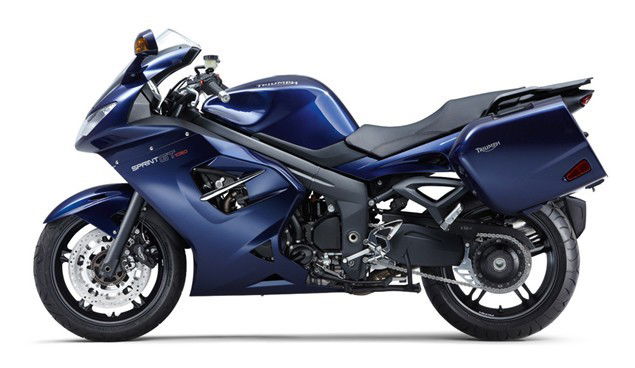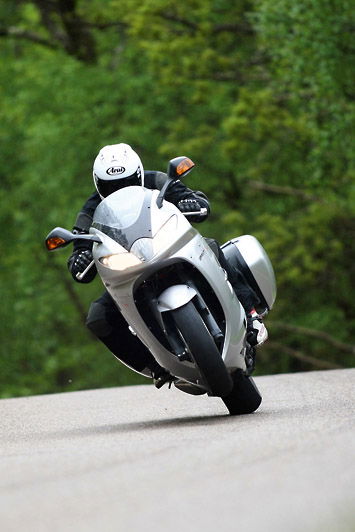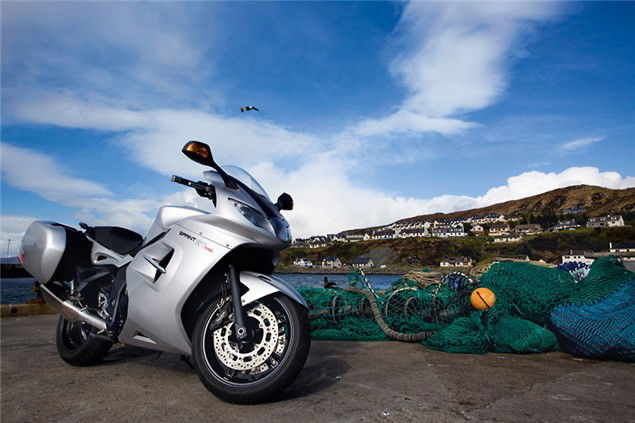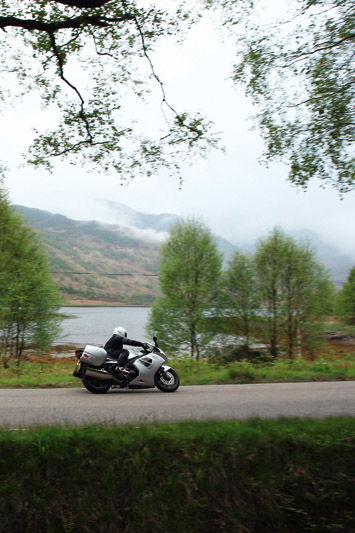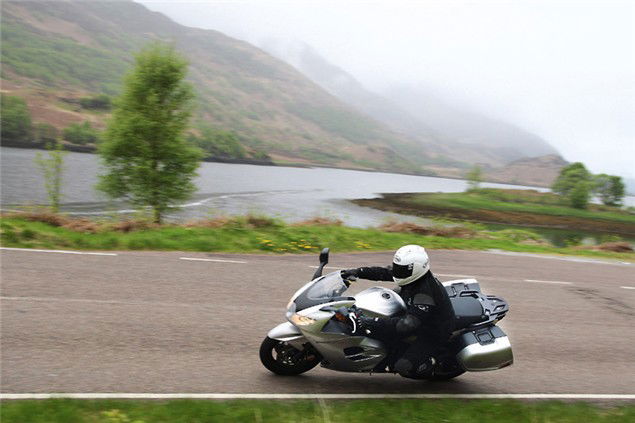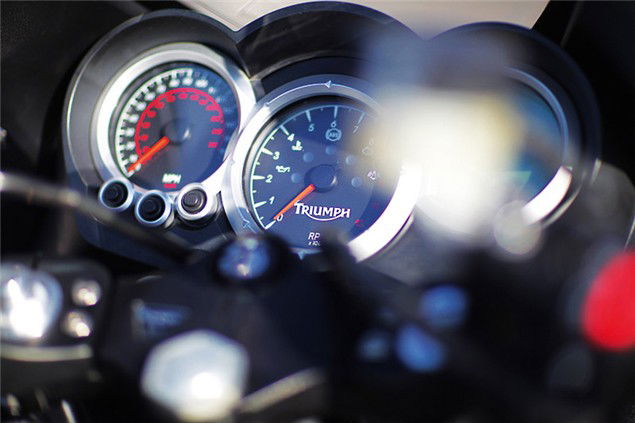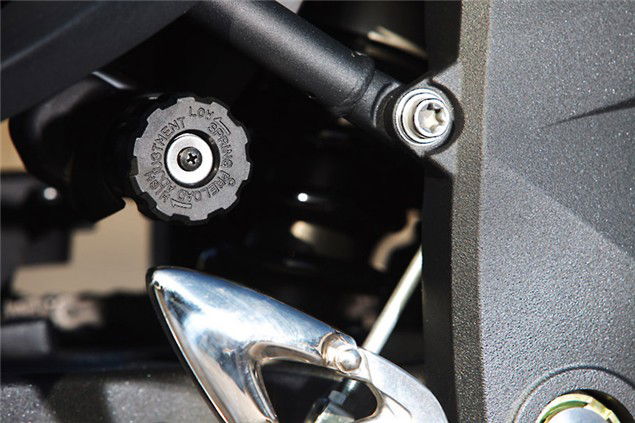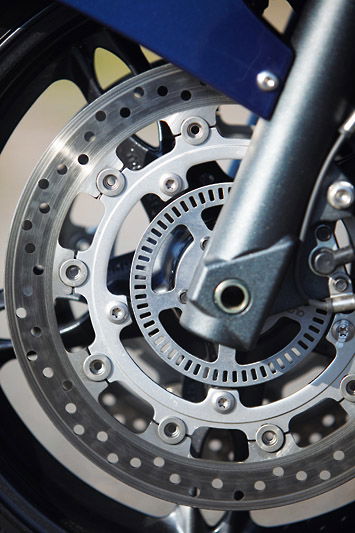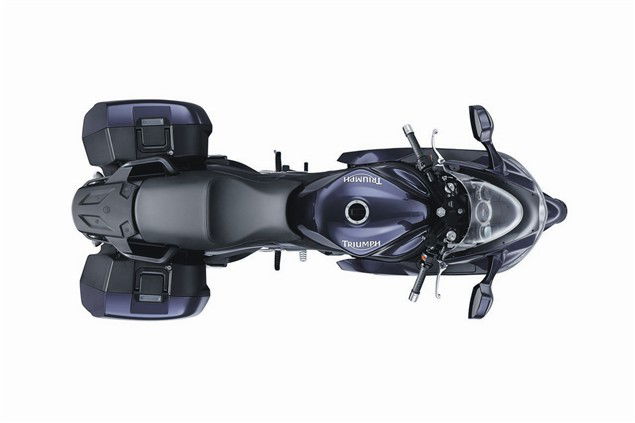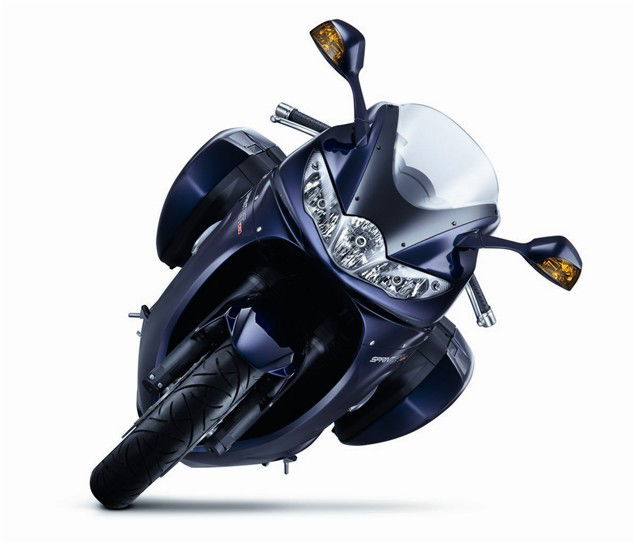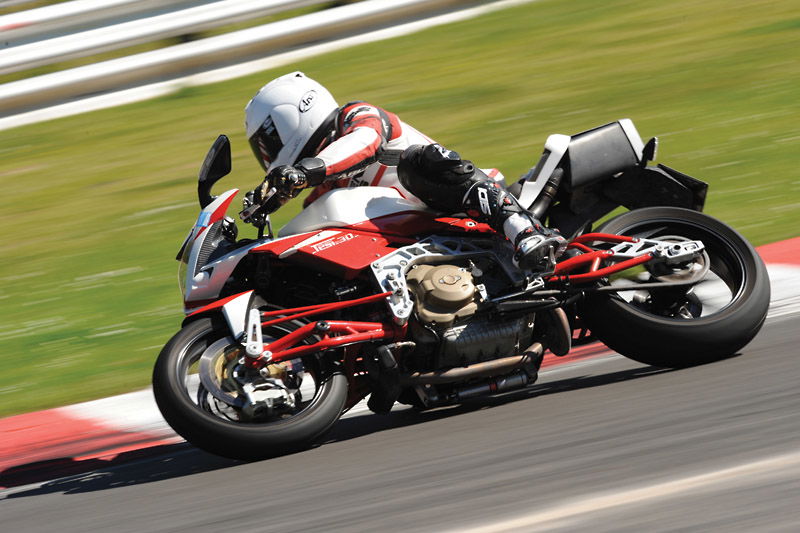2011 Triumph 1050 Sprint GT road test review
More powerful (but a bit too revvy), longer wheelbase with single-sided swingarm, very stable, geared more for touring than its predecessor and overall a very decent tour bus


Click to read: Triumph 1050 Sprint GT owners reviews, Triumph 1050 Sprint GT specs and to see the Triumph 1050 Sprint GT image gallery.
If Honda’s VFR1200 is a sports sports-tourer then BMW’s R1200GT is a sports-tourer tourer. Is that clear? In this market the emphasis can lie clearly at either end of the sports tourer spectrum. We tested both these extremes last issue and, for us, the niftier handling VFR won it for us.
Triumph’s new Sprint GT is a tourer-fied version of the existing Sprint and the changes are pretty extensive. It isn’t as full-on marshmallow as Kawasaki’s GTR1400 or the BMW R1200RT but it falls neatly between these and the VFR.
The original three-cylinder 1050cc lump is still alive and well and has been freshened up with new throttle bodies and a new fuelling map. This and the new underslung exhaust system has boosted power and torque. Peak power (130bhp) is delivered at a slightly dizzy 9,200rpm and a hefty 77.5ft/lb of torque is delivered at 6,300rpm. While pick up at the bottom-end is clean you get the sensation when riding it that everything is loaded in the middle to upper reaches of the power curve. This is fine in the leggy top gear (7% taller) when road conditions allow 90-plus riding, but below this you find yourself shifting gears a lot to keep the motor in its purple patch. It’s a capacity thing. 1050cc will never give the same amount of low down shove as your competitors when they’re employing 200, 300 or 400cc more. The fact the 1050cc is at the limit of its bore dimensions would suggest there’s probably a new bigger capacity triple motor already under development at Hinckley. I have to stress that this is a pure guess and under no circumstances should you hold me to this. Unless I’m right, of course.
The Sprint GT feels long the moment you get it off the sidestand. That’s because it is. A new single-sided swingarm adds a massive three inches to the GT’s wheelbase compared to the Sprint. You can see the difference looking at both bikes side-by-side. The extra wheelbase is partially disguised by the new longer, stronger seat subframe but it’s still obvious. The closest bike I can liken it to in terms of length, wheelbase and feel (in terms of weight bias) is a 1990 ZZR1100 Kawasaki with slightly higher bars.
One of the Triumph team told me that high-speed stability was a major design criterion. They tested it on squared-off tyres with every amount of luggage load to make doubly sure they wouldn’t encounter any ST1100-esque high-speed stability issues. The panniers and optional topbox have a coupled side-to-side movement facility to counter the death weave. Their mission was a success. The Sprint GT is stable right up to and indicated 150mph. Ahem, apparently.
But it is very susceptible to road irregularities like grooves and white lines. Touch a white line while cranked over and the GT will give a little shimmy. It follows ruts and tramlines with a slow yawing movement and exaggerates bad road surfaces to the extent where I really did believe I had a front puncture at one point.
The front Bridgestone BT021 wasn’t soft. A good quality pressure gauge showed 37psi, one psi up on the cold base setting. I thought it might be the arse-down attitude of the bike creating the feeling so I wound the rear spring preload up using the handy (but very low-geared) remote adjuster wheel to get rid of the static sag. This changed the way the bike felt. Yes, it’d still tramline and wiggle when it hit a white line but the steering was much more accurate and direct feeling. Transformation.
The sub-ten thousand pound Triumph Sprint GT is without any direct competition, though. It comes with mahoosive panniers fitted (117-litres of space with the optional top box fitted), acres of space, a gel seat, standard fit ABS brakes, a trip computer, a barn door of a fairing and a two hundred mile tank range. There are some nice touches like optional heated grips and a topbox with a hot pad electrical connection which provides a wireless connection for the integral phone charger socket. And here I am whingeing about a few steering issues. Surely the point of the new Sprint GT is comfort, stability, storage space and value for money. On all these fronts it scores top marks.
It comes in any colour you like as long as it’s either Pacific Blue or Aluminium Silver and it’s available from your friendly local Triumph dealer.
2011 Triumph 1050 Sprint GT
Price £9,499 OTR
Top speed 150mph (est)
Engine 1050cc 12 valve inline triple
Power 128bhp@ 9,200rpm Torque 108Nm@ 6,300rpm
Bore and stroke 79x71.4mm Compression ratio 12.0:1
Front suspension Showa 43mm RWU cartridge forks Adjustment Preload
Rear Suspension Showa monoshock Adjustment Preload & rebound
Front brakes Twin 320mm floating discs, four piston calipers ABS
Rear brake Single 255mm disc, twin pot caliper ABS
Wet weight 268kg Seat height 815mm Fuel capacity 20 litres
Colour options Aluminium silver, Pacific blue
